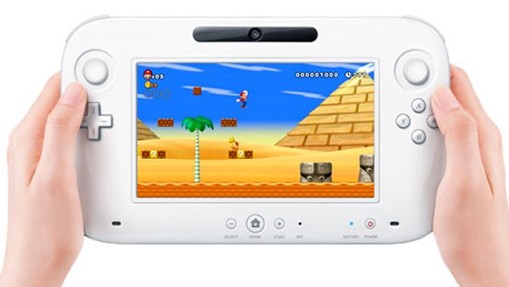Six years ago, Nintendo broke into the homes of millions of families and ripped away hundreds of dollars from their fun-loving hands.
The quintessential Dick and Jane saw the commercials for Nintendo’s then-newest product, the Wii, and said, “Hey, we can have family fun AND lose weight at the same time! Let’s buy this!”
So on Black Friday that year, tubby Dick and chubby Jane ran down to their local Gamestop along with half a million other family-fun seeking parents. They bought the Wii, cracked open Wii Sports (surprisingly the best-selling game of all-time), and had a family-funtastic blast.
A few weeks later, however, their Wiis went from the favorite child to the least favorite, rotting away in the dusty corners of their living rooms. If you haven’t noticed, we’re Dick and Jane and Nintendo had us duped.
When the Nintendo released the Wii, it strived to be less of a “ferocious dinosaur” and more of an innovative, power-relaxed system. That means no high-definition graphics, which means not many third-party publishers.
But the Wii was still brilliant in tapping into a pool of untouched causal gamers and utilizing motion controls, which gave birth to some of the greatest games of all time. Nintendo dominated Microsoft and Sony in sales, pounding them in the seventh generation by about 27 million units sold, as of Sept. 30.
Soon the Wii ran out of steam, losing Nintendo’s long-established connection with hardcore gamers. Its HD-equipped rival systems, the Xbox 360 and Playstation 3, are durable enough for probably a few more years before needing to upgrade, while the Wii isn’t. With home console sales plummeting toward the ground (Nintendo still holds a chokehold over the handheld gaming industry), Nintendo needed to turns things around quickly.
Enter the Wii U.
The Japanese shot-callers and suit-wearers at Nintendo’s home in Kyoto, Japan knew the Wii was crashing. Headed by President Satoru Iwata, the moneybags sent Nintendo soaring into the sky with their innovative console, the first of the eighth generation of home consoles.
If you haven’t heard about it yet, the Wii U is an HD console equipped with the WiiU
GamePad, Nintendo’s most potent weapon yet. The controller is a hybrid of a Nintendo DS XL and a button-heavy Xbox 360 controller, loaded with a touch screen, dual analog sticks, a D-pad, A/B/X/Y buttons, shoulder buttons, trigger buttons, a microphone, a gyroscope, and a handful of words with the ostentatious suffix “ometer” in it.
At first glance, the Wii U GamePad looks great. The extra peripheral means I can see my Madden playbook without my opponent seeing it. The user-friendly, tablet-like controller is equipped for hardcore gaming with its onslaught of buttons and microphone, which allows for communication in online multiplayer matches. It’s already evident that hardcore gaming will return to Nintendo, as handfuls of third-party publishers flocked to the Wii U for launch-date releases, culminating in arguably the greatest launch-date lineup of all time.
But the vital question is: will hardcore gamers return to Nintendo?
They’ve already left Nintendo for Sony and Microsoft, and there isn’t much to bring them back.
“The same games but with motion, an extra peripheral, and a controller on steroids?!” consumers will ideally ask.
“Please excuse me while I leave the room and blow 350 bucks on a system which is of no use to me.”
Even if Nintendo doesn’t drag back many hardcore gamers, it’ll certainly grab more famished causal gamers who no longer have many options on the Wii. The GamePad also has an intuitive TVii button, which allows gamers to step aside and let Mom watch TV while they continue their game on the GamePad. TVii also consolidates viewer’s cable subscriptions and on-demand video accounts. Nintendo was brilliant in doing so, creating an easy-to-use consolidated database for media. Most importantly, the inclusion of TVii foreshadows the future of game consoles.
Nintendo is once again waddling in between generations, with one foot in the door of the previous and one in the door of the next. With the Wii, Nintendo held onto creating game franchises and pushed forth motion controlling. The rest of the seventh generation did the same; just ask the suckers who bought the Playstation Move controller. With the Wii U, Nintendo is holding onto hardcore gamers and pushing forth entertainment systems.
The rest of the eighth generation will do the same, satisfying people’s love for consolidation.
Still, the system’s a mixed bag. The GamePad is sweet, but it might give people sore necks by having to switch from looking at their TVs to their laps. Although the system is compatible for use of more than one GamePad at a time, games haven’t been produced with that feature, and it only comes with one anyways, so your poor friends are going to be stuck with the estranged Wiimote.
If you’re a hardcore gamer, save your money and wait until Sony and Microsoft unveil their new masterpieces to make your decision.
If you’re the timid, casual gamer type, don’t waste your money on the extra peripheral until the Wii runs dry of new game releases.
If you’re a lifelong Nintendo guy and enjoy more than just Mario smashing hovering blocks, it’s the perfect combination.
Behind the sold-out system from presales and upcoming Christmas sales, the Wii U will get a much-needed head start on the eighth generation of home consoles. That head start could also win Nintendo the eighth generation of home consoles, one that’ll change game consoles into universal entertainment epicenters and rip more money away from Dick and Janes like you and I.

